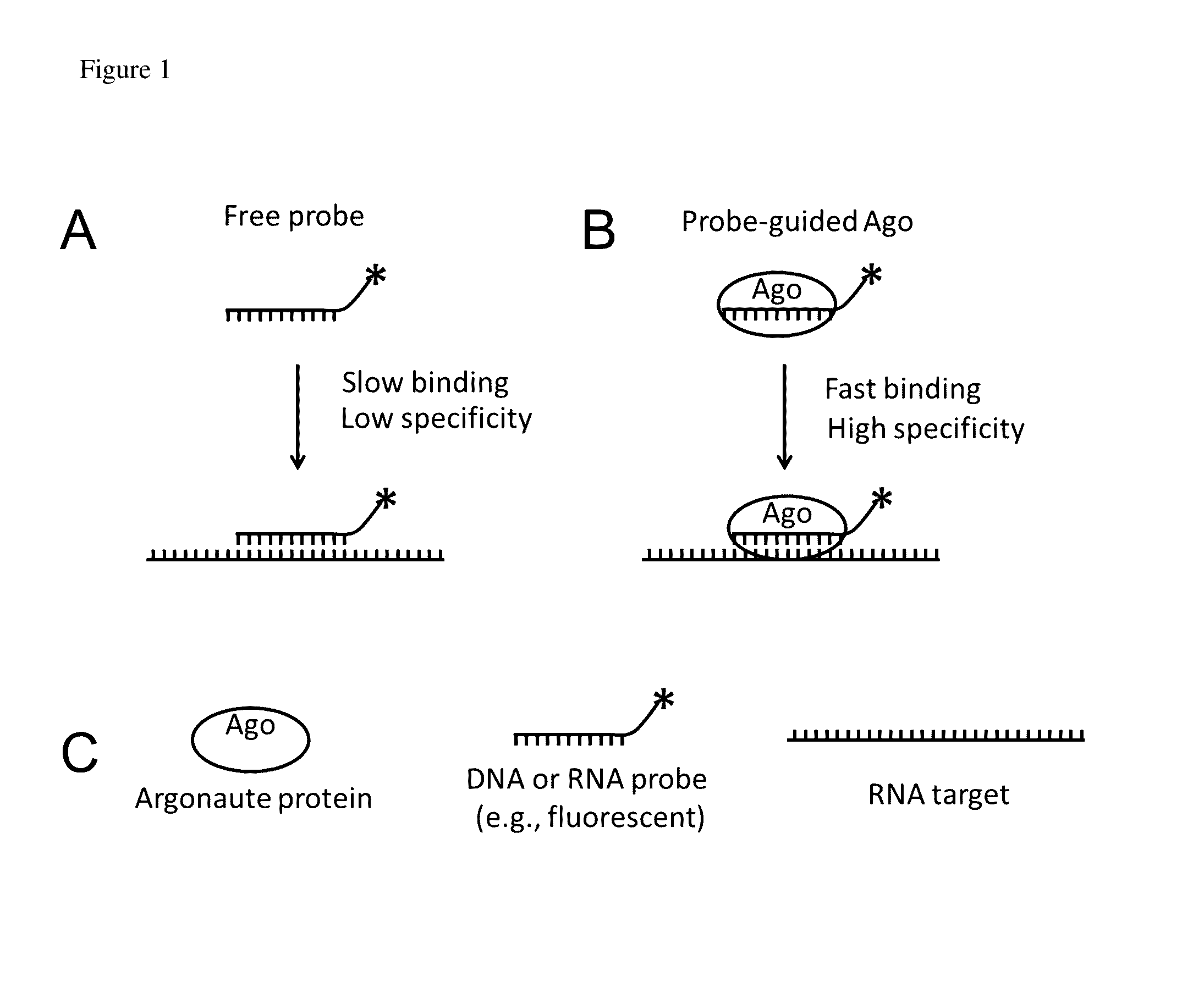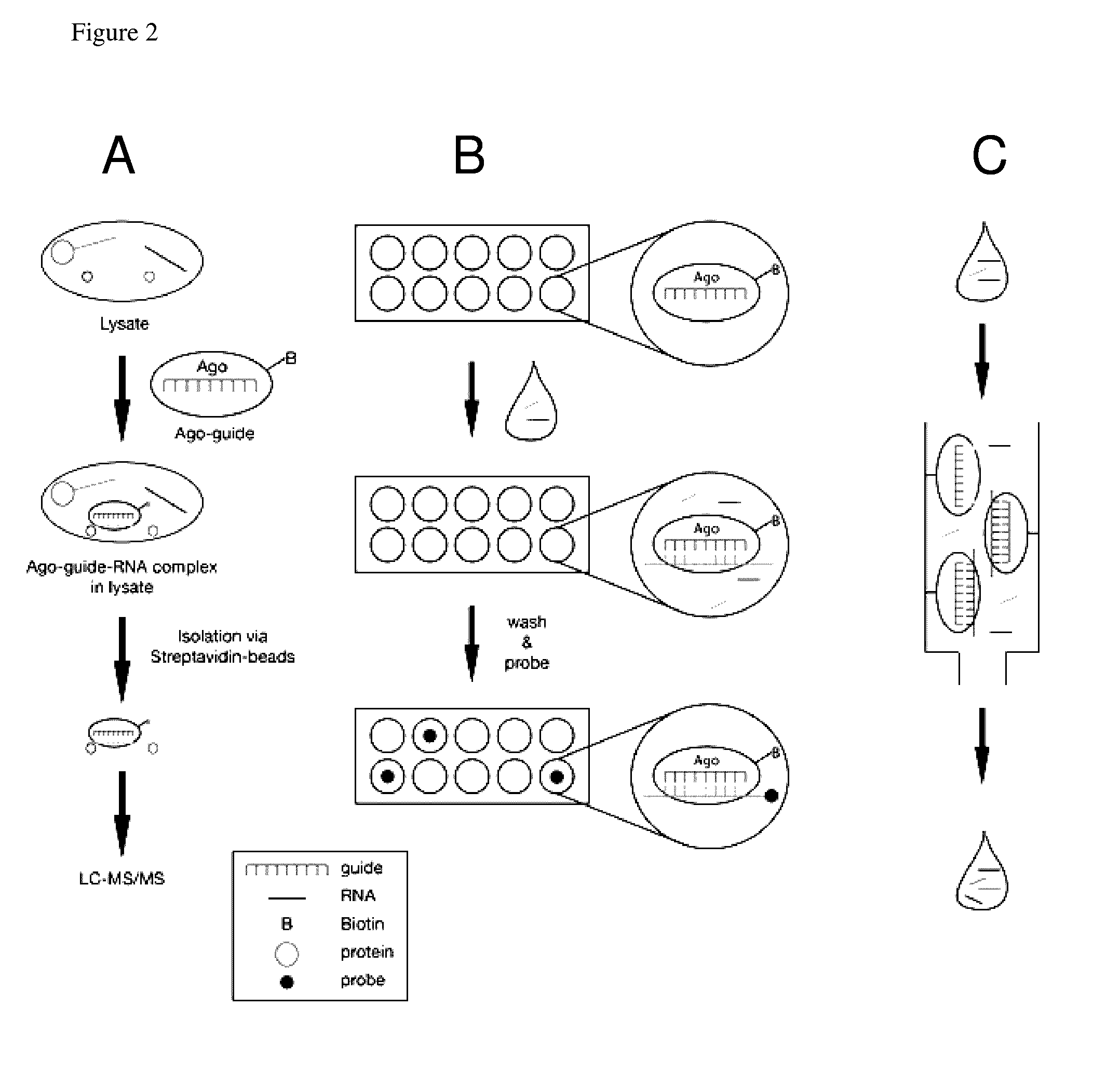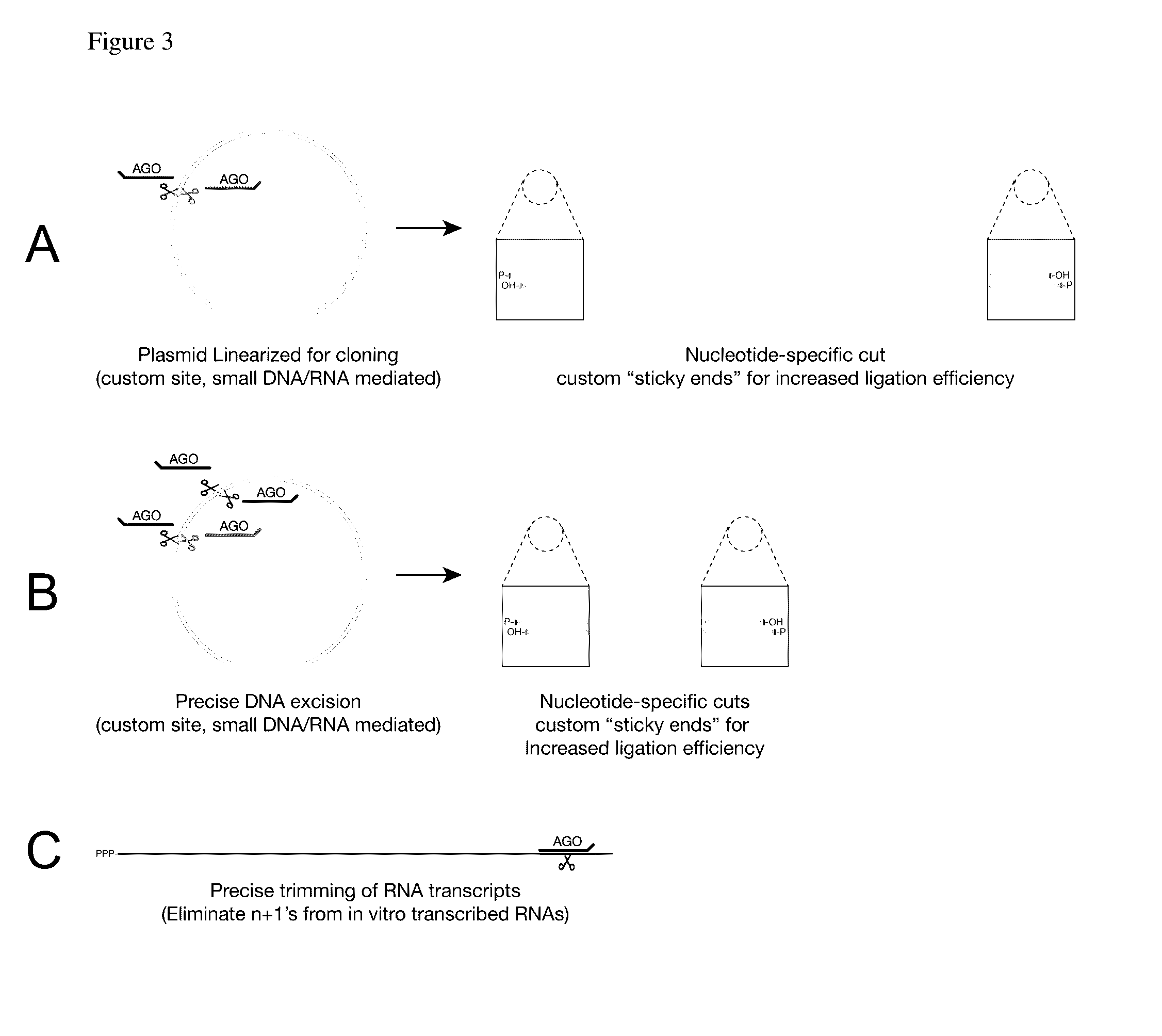Methods of using oligonucleotide-guided argonaute proteins
a technology of argonaute protein and oligonucleotide, which is applied in the field of argonaute polypeptide : guide molecule complex, can solve the problems of limited sensitivity and specificity that can be achieved by all these strategies, impractical approach, and high non-specific recognition levels
- Summary
- Abstract
- Description
- Claims
- Application Information
AI Technical Summary
Benefits of technology
Problems solved by technology
Method used
Image
Examples
example 1
Colocalization Single Molecules Spectroscopy (CoSMoS)
[0186]To measure how Argonaute proteins alter the properties of nucleic acid oligonucleotides, we used Colocalization Single Molecules Spectroscopy (CoSMoS), an implementation of multicolor total internal reflection fluorescence (TIRF) microscopy that achieves high signal-to-noise ratios by exciting only those fluorescent molecules immediately above the slide surface (Friedman et al. Biophys J 91, 1023-1031, 2006). To adapt CoSMoS to study RISC, a fluorescently labeled target RNA was attached to a glass surface via a biotin-streptavidin-biotin-PEG 3,400 linkage and then incubated with purified RISC assembled in vitro to contain a fluorescent guide strand (FIG. 4A). The strategy relies on two novel reagents developed for these studies: (1) a target RNA designed to allow the unambiguous differentiation between target cleavage and photobleaching; and (2) RISC assembled via the cellular Argonaute-loading pathway using a siRNA containi...
example 2
RISC Changes the Rate—Determining Step for Nucleic Acid Hybridization
[0189]Argonaute proteins have been proposed to increase the rate of nucleic acid hybridization by pre-organizing the nucleotides of the seed sequence into a stacked conformation that makes productive collisions with target more likely. The association rate constant, kon, for mammalian AGO2 has been inferred from KD and koff values measured in ensemble binding experiments (Wee et al., Cell 151, 1055-1067, 2012) or estimated by fitting pre-steady state ensemble data to a three-phase exponential model in which the fastest phase was assumed to correspond to kon (Deerberg et al., Proc Natl Acad Sci USA 110, 17850-17855, 2013).
[0190]To measure kon directly, we simultaneously recorded the fluorescence of individual target RNA attached to the slide and individual molecules of mouse AGO2-RISC containing fluorescent guide strand (FIG. 4D). For each target RNA molecule, RISC arrival time was taken to be the first detectable c...
example 3
Argonaute Accelerates the Rate of Target Finding by Creating the Seed Sequence
[0195]The three structural domains of Argonaute proteins divide their guide RNAs into discrete functional domains. To determine which of these functional domains contributes most to the Argonaute-dependent enhancement of target binding, we measured kon using three different target RNAs: (1) a target complementary just to the seed sequence (g2-g8); (2) a target complementary to both the seed and the region of 3′ supplementary pairing (g13-g16); and (3) a target with complete complementarity to the guide (g2-g21; FIG. 2B). For each target RNA, we determined kon for both the guide alone and the guide loaded into mouse AGO2 (FIG. 5). We also measured kon for let-7a binding to a non-target having ≦6 nucleotide complementary to any region of the let-7a guide sequence and ≦4 nucleotide complementary to the let-7a seed sequence. For this essentially non-complementary control RNA, we were unable to detect any bindi...
PUM
| Property | Measurement | Unit |
|---|---|---|
| pH | aaaaa | aaaaa |
| dissociation constant | aaaaa | aaaaa |
| dissociation constants | aaaaa | aaaaa |
Abstract
Description
Claims
Application Information
 Login to View More
Login to View More - R&D
- Intellectual Property
- Life Sciences
- Materials
- Tech Scout
- Unparalleled Data Quality
- Higher Quality Content
- 60% Fewer Hallucinations
Browse by: Latest US Patents, China's latest patents, Technical Efficacy Thesaurus, Application Domain, Technology Topic, Popular Technical Reports.
© 2025 PatSnap. All rights reserved.Legal|Privacy policy|Modern Slavery Act Transparency Statement|Sitemap|About US| Contact US: help@patsnap.com



